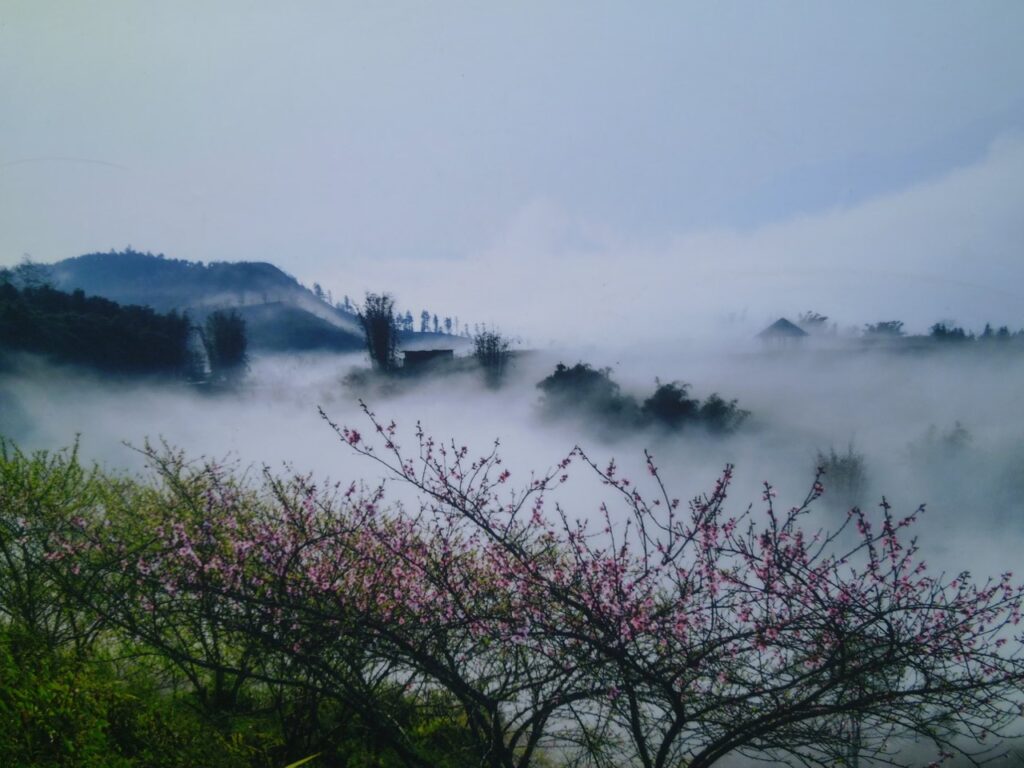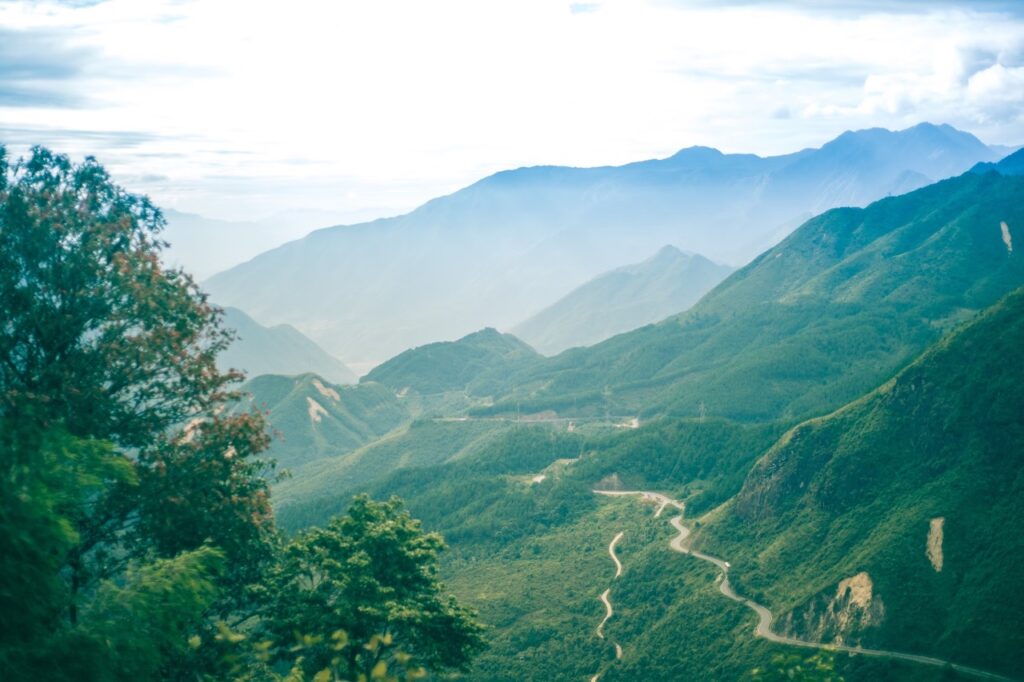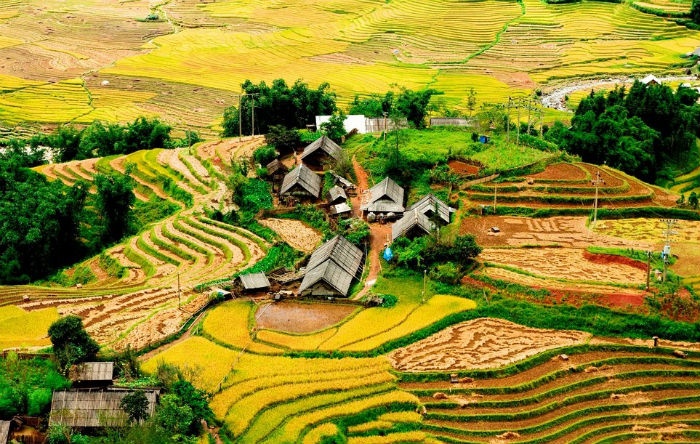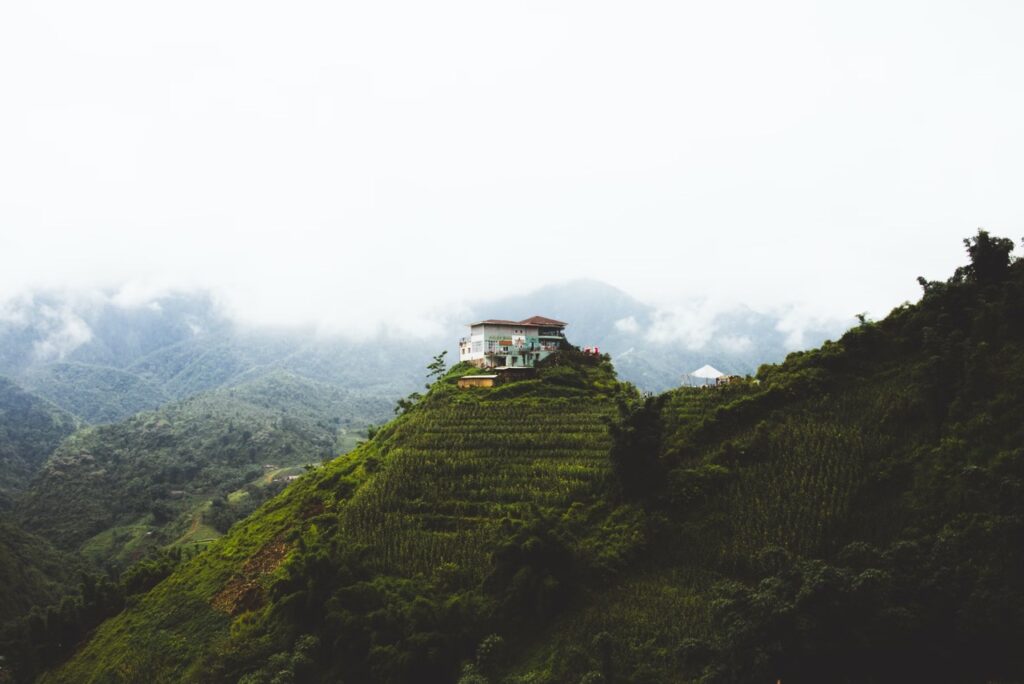If you are planning an escape to explore the timeless beauty of Sapa but still wondering when is the best time to visit Sapa, then this guide will help you decide the best time for your trip. Planing your trip requires an understanding of the distinct charms each season brings. In this comprehensive guide, we’ll unravel the nuances of Sapa’s seasons, helping you choose the best time to visit Sapa to ensure an unforgettable experience.
Spring: A Symphony of Blossoms and Renewal
 As winter bids adieu, Sapa undergoes a magical transformation with the arrival of spring. The town comes alive with an array of blooming flowers, most notably the enchanting cherry blossoms. Here’s why spring might be the best time to visit Sapa:
As winter bids adieu, Sapa undergoes a magical transformation with the arrival of spring. The town comes alive with an array of blooming flowers, most notably the enchanting cherry blossoms. Here’s why spring might be the best time to visit Sapa:
- Floral Extravaganza: Immerse yourself in the ethereal beauty of cherry blossoms, turning Sapa into a picturesque wonderland.
- Mild Temperatures: Spring graces Sapa with moderate temperatures, perfect for outdoor activities and trekking. Daytime temperatures hover around a comfortable 15-20°C.
- Cultural Festivals: Delve into the heart of local traditions by experiencing cultural festivals celebrating renewal and the bountiful harvest.
- Crisp Air and Clear Views: The air is crisp and clear during spring, providing clear and breathtaking views of the surrounding mountains.
Summer: Verdant Landscapes and Lively Markets
 Sapa’s summer ushers in a season of vibrant greenery and bustling markets, offering a different yet equally captivating experience. Consider these factors when planning a summer getaway:
Sapa’s summer ushers in a season of vibrant greenery and bustling markets, offering a different yet equally captivating experience. Consider these factors when planning a summer getaway:
- Lush Green Scenery: The terraced rice fields, in their fullest green attire, create a mesmerizing panorama that’s a treat for the eyes.
- Colourful Markets: Dive into the heart of local life by exploring the lively Bac Ha Market, where ethnic minorities come to trade goods on Sunday. It’s a visual feast and an not to be missed opportunity for cultural immersion.
- Occasional Rainfall: While occasional rain showers may punctuate the summer days, they contribute to the overall enchantment of the landscape. However, you might need to prepare a waterproof shoes with a light raincoat if you travel during rainy season.
Autumn: Golden Harvest and Tranquil Beauty
 Autumn in Sapa unveils a landscape bathed in golden hues, offering a serene atmosphere. Here’s why autumn might be your preferred time:
Autumn in Sapa unveils a landscape bathed in golden hues, offering a serene atmosphere. Here’s why autumn might be your preferred time:
- Golden Rice Terraces: Witness the breathtaking spectacle of golden rice terraces as the fields reach their peak of ripeness.
- Clear Mountain Vistas: Enjoy unparalleled panoramic views of the Hoang Lien Son mountain range, including the majestic Fansipan, Vietnam’s highest peak.
- Mild Weather: Revel in comfortable temperatures ranging from 10-25°C, making it an excellent time for trekking and outdoor adventures.
- Cultural Immersion: Autumn often sees a plethora of cultural festivals, providing an opportunity to engage with local traditions and festivities.
Winter: Mystical Mists and Tranquility
 For those seeking a more serene and mystical side of Sapa, winter holds a unique charm:
For those seeking a more serene and mystical side of Sapa, winter holds a unique charm:
- Ethereal Mist: Winter months shroud Sapa in a gentle mist, creating an otherworldly ambience that adds to its enchantment.
- Less Crowded: Winter sees fewer tourists, offering a more intimate experience with the local culture and landscapes.
- Cool and Crisp Weather: While temperatures can drop, they remain relatively mild, ranging from 5-15°C during the day.
- Cosy Evenings: Embrace the cozy atmosphere of winter nights, perhaps with a warm drink by a fireplace in one of Sapa’s charming lodgings.
Making the Most of Your Sapa Visit: Practical Tips and Cultural Sensitivity
Regardless of the season, optimizing your Sapa experience involves some key considerations:- Pack Layers: Sapa’s weather is known for its variability. Sapa’s temparature can drop really low at nights so be sure to pack layers to adapt to temperature fluctuations throughout the day.
- Comfortable Footwear: Whether navigating bustling markets or trekking through rice fields, comfortable footwear is a must for a pleasant experience.
- Cultural Sensitivity: Show respect for the customs and traditions of the ethnic communities. Seek permission before capturing photographs. You can consider purchasing local handicrafts if you want to support the local people.
